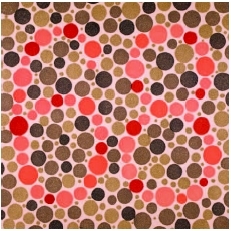Color blindness

Definition
Color blindness is an abnormal condition characterized by the inability to clearly distinguish different colors of the spectrum. The difficulties can range from mild to severe. It is a misleading term because people with color blindness are not blind. Rather, they tend to see colors in a limited range of hues; a rare few may not see colors at all.
Description
Normal color vision requires the use of specialized receptor cells called cones, which are located in the retina of the eye. There are three types of cones, red, blue, and green, which enable people to see a wide spectrum of colors. An abnormality, or deficiency, of any of the types of cones will result in abnormal color vision.
There are three basic variants of color blindness. Red/green color blindness is the most common deficiency, affecting 8 percent of Caucasian males and 0.5 percent of Caucasian females. The prevalence varies with culture.
Blue color blindness is an inability to distinguish both blue and yellow, which are seen as white or gray. It is quite rare and has equal prevalence in males and females. It is common for young children to have blue/green confusion that becomes less pronounced in adulthood. Blue color deficiency often appears in people who have physical disorders such as liver disease or diabetes mellitus .
A total inability to distinguish colors (achromatopsia) is exceedingly rare. These affected individuals view the world in shades of gray. They frequently have poor visual acuity and are extremely sensitive to light (photophobia), which causes them to squint in ordinary light.
Demographics
Researchers studying red/green color blindness in the United Kingdom reported an average prevalence of only 4.7 percent in one group. Only 1 percent of Eskimo males are color blind. Approximately 2.9 percent of boys from Saudi Arabia and 3.7 percent from India were found to have deficient color vision. Red/green color blindness may slightly increase an affected person's chances of contracting leprosy. Pre-term infants exhibit an increased prevalence of blue color blindness. Achromatopsia has a prevalence of about one in 33,000 in the United States and affects males and females equally.

Causes and symptoms
Red/green and blue color blindness appear to be located on at least two different gene locations. The majority of affected individuals are males. Females are carriers but are not normally affected. This indicates that the X chromosome is one of the locations for color blindness. Male offspring of females who carry the altered gene have a 50 percent chance of being color-blind. The rare female that has red/green color blindness, or rarer still, blue color blindness, indicates there is an involvement of another gene. As of 2004, the location of this gene was not yet identified.
Achromatopsia, the complete inability to distinguish color, is an autosomal recessive disease of the retina. Thus, both parents have one copy of the altered gene but do not have the disease. Each of their children has a 25 percent chance of not having the gene, a 50 percent chance of having one altered gene (and, like the parents, being unaffected), and a 25 percent risk of having both the altered gene and the condition. In 1997, the achromatopsia gene was discovered to reside on chromosome 2.
The inability to correctly identify colors is the only sign of color blindness. It is important to note that people with red/green or blue varieties of color blindness use other cues such as color saturation and object shape or location to distinguish colors. They can often distinguish red or green if they can visually compare the colors. However, most have difficulty accurately identifying colors without any other references. Most people with any impairment in color vision learn colors, as do other young children. These individuals often reach adolescence before their visual deficiency is identified.
Color blindness is sometimes acquired. Chronic illnesses that can lead to color blindness include Alzheimer's disease, diabetes mellitus, glaucoma, leukemia, liver disease, chronic alcoholism , macular degeneration, multiple sclerosis, Parkinson's disease, sickle cell anemia , and retinitis pigmentosa. Accidents or strokes that damage the retina or affect particular areas of the brain eye can lead to color blindness. Some medications such as antibiotics , barbiturates, anti-tuberculosis drugs, high blood pressure medications, and several medications used to treat nervous disorders and psychological problems may cause color blindness. Industrial or environmental chemicals such as carbon monoxide, carbon disulfide, fertilizers, styrene, and some containing lead can cause loss of color vision. Occasionally, changes can occur in the affected person's capacity to see colors after age 60.
When to call the doctor
An ophthalmologist should be consulted at the time color blindness is first suspected.
Diagnosis
There are several tests available to identify problems associated with color vision. The most commonly used is the American Optical/Hardy, Rand, and Ritter Pseudoisochromatic Test. It is composed of several discs filled with colored dots of different sizes and colors. A person with normal color vision looking at a test item sees a number that is clearly located somewhere in the center of a circle of variously colored dots. A color-blind person is not able to distinguish the number.
The Ishihara Test is comprised of eight plates that are similar to the American Optical Pseudoisochromatic Test plates. The individual being tested looks for numbers among the various colored dots on each test plate. Some plates distinguish between red/green and blue color blindness. Individuals with normal color vision perceive one number. Those with red/green color deficiency see a different number. Those with blue color vision see yet a different number.
A third analytical tool is the Titmus II Vision Tester Color Perception Test. The subject looks into a stereoscopic machine. The test stimulus most often used in professional offices contains six different designs or numbers on a black background, framed in a yellow border. Titmus II can test one eye at a time. However, its value is limited because it can only identify red/green deficiencies and is not highly accurate.
Treatment
As of 2004 there is no treatment or cure for color blindness. Most color vision deficient persons compensate well for their abnormality and usually rely on color cues and details that are not consciously evident to persons with typical color vision.
Inherited color blindness cannot be prevented. In the case of some types of acquired color deficiency, if the cause of the problem is removed, the condition may improve with time. But for most people with acquired color blindness, the damage is usually permanent.
Prognosis
Color blindness that is inherited is present in both eyes and remains constant over an individual's entire life. Some cases of acquired color vision loss are not severe, may appear in only one eye, and last for only a short time. Other cases tend to become worse with time.
Prevention
There is no way to prevent genetic color blindness. There is no way to prevent acquired color blindness that is associated with Alzheimer's disease, diabetes mellitus, leukemia, liver disease, macular degeneration, multiple sclerosis, Parkinson's disease, sickle cell anemia, and retinitis pigmentosa.
Some forms of acquired color blindness may be prevented. Limiting use of alcohol and drugs such as antibiotics, barbiturates, anti-tuberculosis drugs, high blood pressure medications, and several medications used to treat nervous disorders and psychological problems to levels that are required for therapeutic benefit may limit acquired color blindness.
Parental concerns
Parents can inquire about other family members who have experienced color blindness. If such family members exist, parents can have their children tested for color perception at an early age. Screening for color perception is usually performed in grade school.
KEY TERMS
Achromatopsia —The inability to distinguish any colors.
Cones —Receptor cells, located in the retina of the eye, that allow the perception of colors.
Photophobia —An extreme sensitivity to light.
Retina —The inner, light-sensitive layer of the eye containing rods and cones. The retina transforms the image it receives into electrical signals that are sent to the brain via the optic nerve.
Rods —Photoreceptors, located in the retina of the eye, that are highly sensitive to low levels of light.
Resources
BOOKS
Color Blindness: A Medical Dictionary, Bibliography, and Annotated Research Guide to Internet Resources. San Diego, CA: Icon Group International, 2003.
Fay, Aaron, and Frederick A. Jokobiec. "Diseases of the Visual System." In Cecil Textbook of Medicine , 22nd ed. Edited by Lee Goldman, et al. Philadelphia: Saunders, 2003, pp. 2406–19.
Olitsky, Scott, and Leonard B. Nelson. "Disorders of Vision." In Nelson Textbook of Pediatrics , 17th ed. Edited by Richard E. Behrman, et al. Philadelphia: Saunders, 2003, pp. 2087–9.
Wiggs, Janey L. "Color Vision." In Ophthalmology, edited by Myron Yanoff and Jay S. Duker. St. Louis, MO: Mosby, 2000.
PERIODICALS
Abadi, R. V. "Effects of Color Blindness." Ophthalmic and Physiological Optics 24, no. 3 (2004): 252–57.
Atchison, D. A., et al. "Traffic Signal Color Recognition Is a Problem for Both Protan and Deutan Color-vision Deficients." Human Factors 45, no. 3 (2003): 495–503.
Dick, F., et al. "Is Color Vision Impairment Associated with Cognitive Impairment in Solvent Exposed Workers?" Occupational and Environmental Medicine 61, no. 1 (2004): 76–78.
Tagarelli, A., et al. "Color Blindness in Everyday Life and Car Driving." Acta Ophthalmology Scandinavia 52, no. 4 (2004): 436–42.
ORGANIZATIONS
American Academy of Family Physicians. 11400 Tomahawk Creek Parkway, Leawood, KS 66211–2672. Web site: http://www.aafp.org/.
American Academy of Pediatrics. 141 Northwest Point Boulevard, Elk Grove Village, IL 60007–1098. Web site: http://www.aap.org/default.htm.
WEB SITES
"Color Blindness: More Prevalent Among Males." Howard Hughes Medical Institute. Available online at http://www.hhmi.org/senses/b130.html (accessed November 16, 2004).
Rutherford, Kim. "What Is Color Blindness?" KidsHealth for Kids. Available online at http://kidshealth.org/kid/talk/qa/color_blind.html (accessed November 16, 2004).
Waggoner, Terrace L. Ishihara Test for Color Blindness. Available online at http://www.toledo-bend.com/colorblind/Ishihara.html(accessed November 16, 2004).
L. Fleming Fallon Jr., MD, DrPH